WEMA Achi eves Major Milestone in African Agriculture
The WEMA project has developed conventional drought-resistant maize hybrids, which are sold under the brand name DroughtTEGO, as well as genetically modified (GM) varieties
By Winnie Nanteza
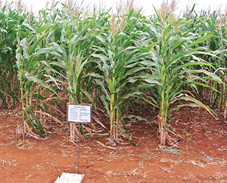 The Water Efficient Maize for Africa (WEMA) project has concluded its first decade of research, achieving significant advances that are benefitting small-holder maize farmers in sub-Saharan nations.
The Water Efficient Maize for Africa (WEMA) project has concluded its first decade of research, achieving significant advances that are benefitting small-holder maize farmers in sub-Saharan nations.
Some 300 million Africans depend on maize as their main food source, but the crop is frequently destroyed by drought and insect pests, leading to hunger, poverty and human suffering. Hybrids developed under the WEMA project can help farmers better respond to droughts, and the associated loss in productivity, caused by climate change.
“It’s been a thrilling journey and a lot has been accomplished,” said Lawrence Kent of the Bill & Melinda Gates Foundation, which was joined by USAID and the Howard G. Buffett Foundation in funding WEMA. The public-private partnership is led by the nonprofit African Agricultural Technology Foundation (AATF). Other partners are the International Maize and Wheat Improvement Center (CIMMYT), Monsanto and the National Agricultural Research Systems (NARS) from the participating nations: Kenya, Uganda, Tanzania, South Africa, Ethiopia and Mozambique.
Read more ...
Greedy Traders, Rich Farmers Fight for Control of NCPB Billions
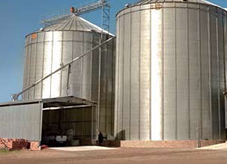 Money is sweet. Money obtained corruptly seems even sweeter. But it is not. Like wearing a stolen jacket, one keeps looking over the shoulder fearing that the owner might spot it and embarrass him, but keeps hoping it won’t happen.
Money is sweet. Money obtained corruptly seems even sweeter. But it is not. Like wearing a stolen jacket, one keeps looking over the shoulder fearing that the owner might spot it and embarrass him, but keeps hoping it won’t happen.
Wealth obtained through corruption is stolen property. And like all stolen property, culpability falls on both the thief and the beneficiaries. Ever heard of a crime called handling stolen property? That is what children, spouses, relatives and friends of corrupt individuals are guilty of whenever they drive cars, sleep in houses and even eat food bought with money stolen from the public through corrupt means.
So the next time you sell that towel at Sh100,000, remember that you are making your child, wife, husband and mother an accomplice of theft. And soon, you are going to get caught. And all your beneficiaries will be exposed for who they are - beneficiaries of the proceeds of crime!
You see, that whole system of corruption is about to fall apart. The house of cards is about to start crumbling, and the hidden cogs will be exposed.
Read more ...
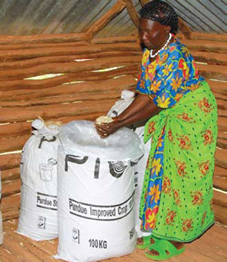 During last year’s Jamhuri Day speech, President Uhuru Kenyatta revealed his legacy agenda under the banner the “Big Four”.
During last year’s Jamhuri Day speech, President Uhuru Kenyatta revealed his legacy agenda under the banner the “Big Four”. The Water Efficient Maize for Africa (WEMA) project has concluded its first decade of research, achieving significant advances that are benefitting small-holder maize farmers in sub-Saharan nations.
The Water Efficient Maize for Africa (WEMA) project has concluded its first decade of research, achieving significant advances that are benefitting small-holder maize farmers in sub-Saharan nations. Money is sweet. Money obtained corruptly seems even sweeter. But it is not. Like wearing a stolen jacket, one keeps looking over the shoulder fearing that the owner might spot it and embarrass him, but keeps hoping it won’t happen.
Money is sweet. Money obtained corruptly seems even sweeter. But it is not. Like wearing a stolen jacket, one keeps looking over the shoulder fearing that the owner might spot it and embarrass him, but keeps hoping it won’t happen.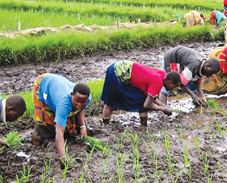 With a population of 40 million, an annual population growth rate of 2.7% and recent rainfall deficits threatening its food security, Kenya needs to engage in crop diversification at the national level, with a focus on targeting production of staples such as rice in suitable agro-ecological systems. Such enhanced production could play a key role in ensuring that food production gaps are sealed and improving overall national food security.
With a population of 40 million, an annual population growth rate of 2.7% and recent rainfall deficits threatening its food security, Kenya needs to engage in crop diversification at the national level, with a focus on targeting production of staples such as rice in suitable agro-ecological systems. Such enhanced production could play a key role in ensuring that food production gaps are sealed and improving overall national food security.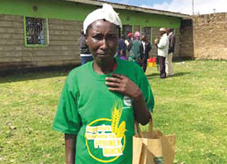 It was pomp and dance as cereal growers in Nairage Enkare, Narok County welcomed the entry of a first class grass herbicide in their spray programs. The entry came with an almost audio recorded oratory of Robert Wachira, Country Head, Adama East Africa not previously heard in the area.
It was pomp and dance as cereal growers in Nairage Enkare, Narok County welcomed the entry of a first class grass herbicide in their spray programs. The entry came with an almost audio recorded oratory of Robert Wachira, Country Head, Adama East Africa not previously heard in the area.